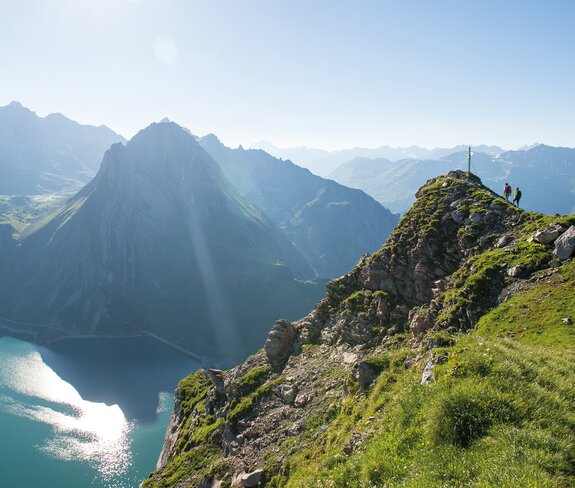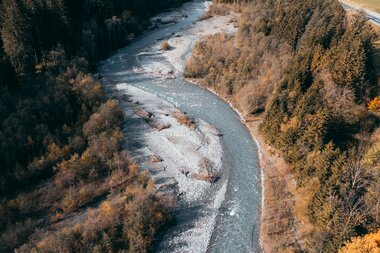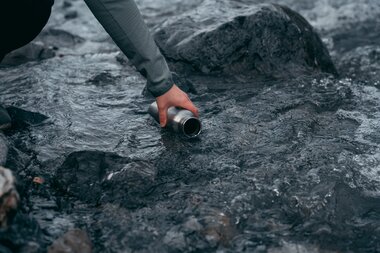
Alpine water realm Klostertal
Interview with Christof Thöny
In Klostertal, hidden between the majestic peaks of the Alps, water has been telling a story of life, change and survival for centuries. Wherever you look in this impressive landscape, water is more than just an element - it is the lifeline that shapes the valley and has accompanied people for generations.
It starts with the springs high up in the mountains, which merge into rushing streams and rivers. The main river, the Alfenz, makes its way through the valley, past steep rock faces and dense forests. But this beauty also harbors dangers: Floods and mudslides have often taken their toll over the course of history.

Christof Thöny, Chairman of the Klostertal Museum Association, knows these stories well. "The water here is like an impetuous friend," he says with a smile. "It gives you everything you need, but it also demands respect." In his exhibition "Alpine Water World", he shows how deeply water is interwoven into people's lives.
In the past, they used the streams to transport wood down into the valley - a vital technique that was perfected in winter over the icy torrents. However, water was not only crucial for transportation, but also for irrigating the fields. High up on the mountain slopes, the inhabitants built narrow ditches to supply the steep meadows with life-giving water. These channels, called "Lätera", are still visible traces of a time when survival in the valley required hard work and ingenuity.
However, water was not only a blessing in the Klostertal. It also brought destruction. The devastating flood of 1910 in particular is still remembered by many. The Alfenz, otherwise a calm river, turned into a raging monster that destroyed bridges and threatened the lives of many people. "It's as if nature keeps reminding us that we are its guests," says Thöny thoughtfully.
Despite all the challenges, water has also brought progress to the people of Klostertal. Life in the valley changed fundamentally with the construction of the Arlberg Railway and later the hydroelectric power plants, such as the Spullersee power plant. Water, once only used for survival, became a source of energy and prosperity.
Today, when the sun shines on the glistening mountain lakes and the Alfenz flows calmly through the valley, it is difficult to imagine the elemental force that this element carries. But the people of Klostertal have learned to live with water - to respect it, to use it and at the same time to protect themselves from it.
The water in the Klostertal is far more than just a natural resource. It is the heartbeat of a region that has repeatedly faced the challenges of nature over the centuries. And it tells a story of life, change and the close connection between man and nature - a story that continues to this day.


